If there is anything that the last few years have taught us, it is that life is always changing. This unpredictability has revved up to a point, seemingly like never before, that society feels it is on the brink of all out chaos for a better part of 2 years. Those paying attention are feeling that they must become even more prepared for what is ahead. When the collapse happens, it is no longer a matter of “IF” but when, there will be a lot of people caught unawares.
One fantastic way to ensure you, your family and the ones you love will have enough to eat is by consistently growing your own food. In order to to eat everyday what you grow and produce in a garden, you will need as your foundation quality seeds. You can certainly start out your efforts in seeking out those vendors who can get you the type and quantity of seeds you want, but instead of you keeping to pay your hard-earned money for seeds each year after, you can harvest seeds from what you grow on your land.
Why not buy from the local grocer and harvest those seeds? For one and one reason only. Usually your grocer is being supplied buy a farmer that is using GMO seed to grow his/her crops en masse. You need to select non-hybrid, heirloom, or open-pollinated produce for your seed harvest, it improves their chances of viability when planted, and you can’t get that guarantee from the supermarket chain closest to you.
As a side note, In addition to harvesting, drying and seasonal storage are also vital when seed harvesting and storing each time you harvest.
How To Harvest Your Seeds
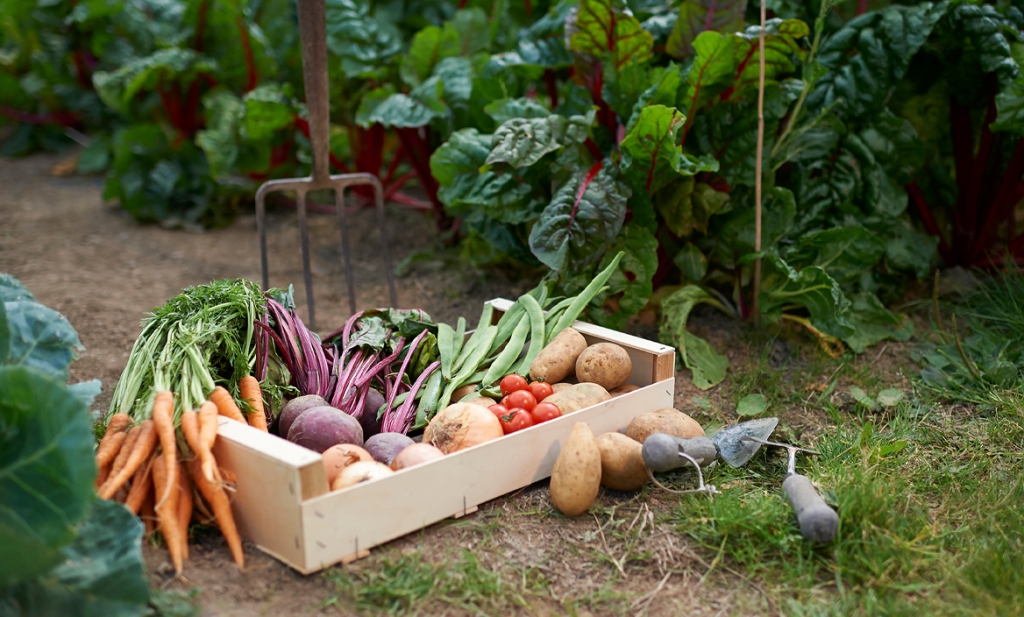 As you prepare for getting your next year’s seeds for planting, be sure to select your healthiest plants for their seeds. Any disease or abnormalities in the produce will transfer to the seeds and therefore, the new plant. It is a copy of a copy type of thing. It will continue the genetics and pass it on to the following generations, good or bad.
As you prepare for getting your next year’s seeds for planting, be sure to select your healthiest plants for their seeds. Any disease or abnormalities in the produce will transfer to the seeds and therefore, the new plant. It is a copy of a copy type of thing. It will continue the genetics and pass it on to the following generations, good or bad.
Select the 15-20% for harvesting from heirloom or open-pollinated plants, as they keep producing every year. Hybrid plants are more seasonal and will not continue to yield a reliable crop after one season.
There are a series of things that if you are able to follow and bring to pass you will ensure that each and every year you gain the cream of your crops whether they be in large or small quantities with whichever method you employ to grow what you want to have for dinner.
Here they are:
- Pick a fully matured piece of fruit (or vegetable) to harvest. It’s the healthy, mature, and productive plants that will give off the best seeds and grow into the healthiest plants each year.
- Slice the produce open with a clean, sharp knife, be careful not to waste the precious seeds.
- Gather the seeds into a bowl to be able to separate and wash off as the fruit or vegetable requires.
- Cover any pulpy or wet seeds with water. Allow them to sit in the water for 2-4 days, stirring daily. This will allow the seeds to sink to the bottom of the bowl, while the pulp floats on top of the water.
- Rinse all seeds with clean water before laying out on a paper towel to dry. Be sure to layer in one single layer so the seeds dry properly.
- Place the seeds in a well-ventilated area to completely dry. Turn the seeds with your hands every day to ensure they are drying evenly on all sides.
- Once the seeds are fully dry, store them in a sealed glass jar, away from light. This environment should be very cool and dry. Seeds will last up to one year (potentially two) if stored in this manner.
Issues That Can Arise
Residual Moisture Content
Seeds need to be fully dry, without any moisture whatsoever in order to be ready for storage. Any residual moisture will invite disease and bacteria into the seeds. Moisture can also cause the seeds to germinate, rendering them useless for planting season.
 Improper Storage
Improper Storage
It happens, sometimes things aren’t just right when it comes to storage. Seeds need to be kept in an airtight container, away from light and moisture once dried. Seeds will not be as viable (have the ability to sprout) if they are not stored properly. Be careful, and vigilant to the seeds you are already storing.
Disease
Any disease that the plant had previously will pass on to it’s seeds and eventual new plant. That is why you must inspect each choice seed donation carefully. If anything is amiss, err on the side of caution, or you are wiping out next seasons planting and harvest. Give them the best chance for survival.
Best Home Seeds for Harvesting
 Potatoes
Potatoes
These are probably the easiest to gather. You just have to set aside as many of your latest harvest that you want to have as your start seed potatoes next season. You will want to do this right after you dig up the mess of taters for the harvest.
Shake off the majority of the dirt, no they don’t have to be pristine, slice them in half and put them into a burlap sack.
Allow them to be stored in a dry non-humid place. If you don’t they will want to sprout and can go to ruin. Again these are about the easiest “seeds” to harvest when you keep them in a dry, cool place. When you are ready to plant next year just take out each and get them in some nutrient rich soil 6 or 7 inches deep and let nature take its course.
Beans
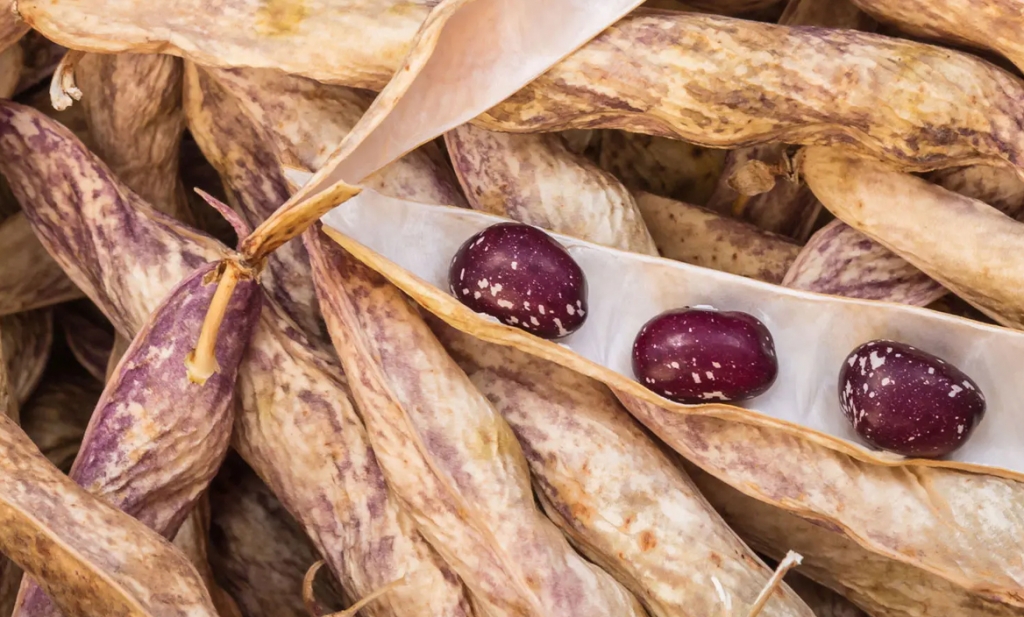 You will want to harvest our favorite type of beans to add fiber and nutrients to your diet in a dire situation. Now there is no use to get that been you don’t like or have any experience using in your cooking (hello navy beans, blech!). Harvesting beans is slightly different to any of the other mentioned methods detailed here.
You will want to harvest our favorite type of beans to add fiber and nutrients to your diet in a dire situation. Now there is no use to get that been you don’t like or have any experience using in your cooking (hello navy beans, blech!). Harvesting beans is slightly different to any of the other mentioned methods detailed here.
Allow the pods to dry on the plant until they are hard, dry, and brownish in color. Remove the pods from the plant and lay them out in a single layer to dry indoors. Leave them for 2 weeks before shelling the beans. You can also wait until planting season to shell the beans and then immediately plant.
Oh remember, remember, cool, dry and darker place is the best way to keep these stored!
Cucumbers
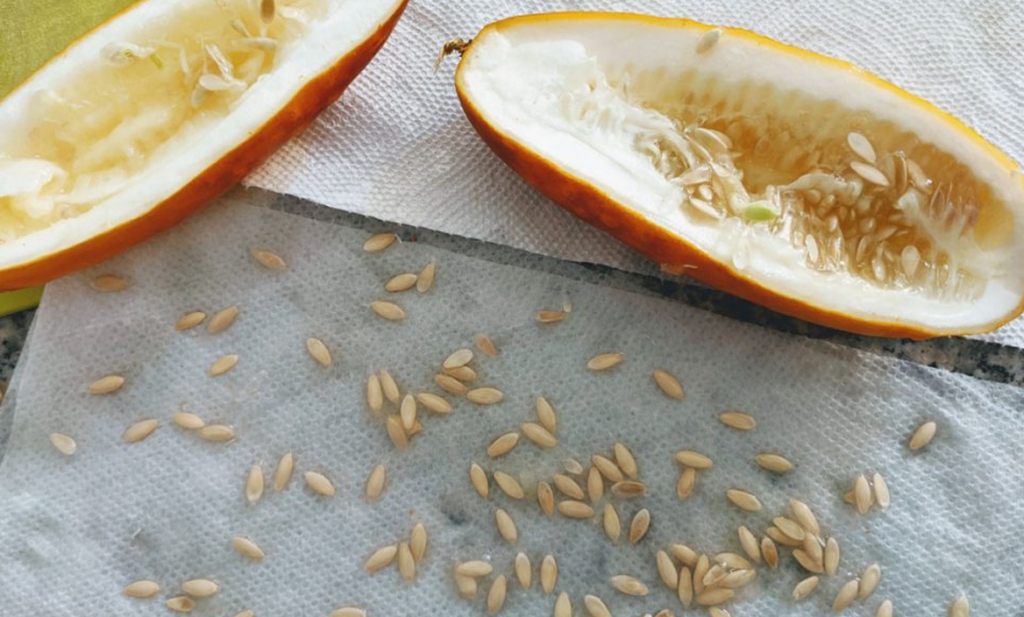 Cucumbers are a ‘fruit’ with pulpy seeds. Harvesting them in a similar fashion to tomato seeds will yield the best results for replanting. Scoop them out of the chosen batch and into a bowl of water to separate the pulp and the seeds. Once they (the seeds) have dropped to the bottom of the bowl, take out the pulp and throw it away and drain the water for the seeds.
Cucumbers are a ‘fruit’ with pulpy seeds. Harvesting them in a similar fashion to tomato seeds will yield the best results for replanting. Scoop them out of the chosen batch and into a bowl of water to separate the pulp and the seeds. Once they (the seeds) have dropped to the bottom of the bowl, take out the pulp and throw it away and drain the water for the seeds.
Spread them out on a paper towel or cheescloth and let them dry naturally over the course of a week or so. Gather them up and store them again in a cool, dry place.
Cucumbers grow in abundance and are great for pickling (giving you the nutrients and the salt that you may need in the lean times). Before harvesting, cucumbers need to be yellowing and past ripe in order to harvest viable seeds.
You should harvest cucumber seeds because cucumbers can be used in many different ways once fully grown. They are delicious as a snack, in a salad, or as a pickle. Pickling your cucumbers will allow them to last a long time and develop a delicious, briny flavor. Use some of your cucumber harvest to harvest more seeds, and use the excess fruits to pickle or preserve.
 Peppers of all sorts
Peppers of all sorts
One of the fruits with the most dry seeds inside is the pepper. Harvesting an of the types, bell, jalepeno, chili, etc of the pepper seeds is great because it will yield a large number of seeds for you, and you will have more than enough peppers for your family, friends, and neighbors.
To do so is as easy as slicing the pepper in half to get access to the seeds, and placing those seeds on paper towels to dry properly over the course of the week or so. Gather and store in yet again a cool and dry place.
The seeds then simply need to be dried (to prevent disease) and stored in a non-humid place before planting. Easy!
Fresh Green Leafies
Many herbs, spinach, lettuce or chard are self-seeding, so their seeds will drop in the fall and grow on their own when the season changes to spring. You may want to collect the seeds before they germinate, however, to better control where the crop grows.
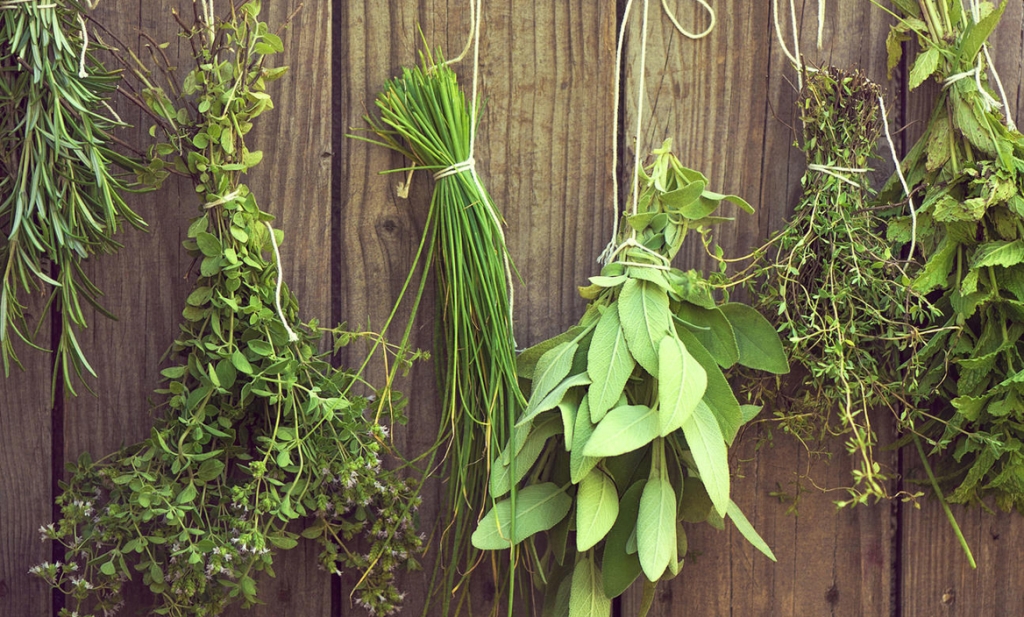 Pick the portion of your leafies crop that you will want to gather seeds from and hang them to dry at the end of the fall harvest. As you do so with twine or small rope, fasten a paper bag around the plant to catch the seeds that will drop as the plant dries out.
Pick the portion of your leafies crop that you will want to gather seeds from and hang them to dry at the end of the fall harvest. As you do so with twine or small rope, fasten a paper bag around the plant to catch the seeds that will drop as the plant dries out.
Allow the seeds to dry on the plant for as long as possible. Then, remove the whole flower to a paper bag. Harvest the healthiest looking seeds from the flower and dry/store the seeds as discussed. Fresh herb seeds, in particular, are important to harvest because they will add flavor to your dishes, and can be dried to last a long time.
Both dried and fresh herbs from the garden not only add flavor, but have a nutritional and medicinal value as well.
Follow the types
I’ve detailed all the types of seeds that you will come across. Whether it takes a part of the previous harvest, like the potato; are found in a pod or shell, like the bean; found in a wet environment like the cucumber an lastly, in a dry state like the pepper. Tomatoes, Spinach, Sunflowers, Pumpkin, Squash and more are found in each category. Follow on how you would harvest each and you will not have any trouble gathering your seeds in the Seedbank that you want to build.
Additional Seed Gathering Tips:
- Do your jam dandiest to rotate where you plant your produce in the garden. Changing up the location of your plants each year will help enrich the soil. For example, do not plant your tomatoes where you always plant your tomatoes. Change up the layout and your soil will gain nutritional benefits.
- If that is not an option, at the beginning of each growing season, mix in the healthy composting soil you have been making over the course of the last year or infuse into the soil those nutritional elements that refresh the soil for the new and current growing season.
- Label your seeds. Fall season is seed season, so you may be harvesting many seeds at once. When laying out to dry, label each seed group as to not confuse yourself later on. Also label the jars when storing so there are no surprises come planting season.
Bonus Content: How to Properly Harvest Seeds and Get a Sustainable Food Source Year Round
When you actively gather your seeds from the previous growing season you are ensuring that your next year is again going to be an heirloom seed centered one. Also, by doing so you avoid the increasing costs of purchasing new seeds which inevitably will rise each season. Harvesting seeds from your own produce will keep your garden afloat if and when the hardships on society rear its ugly heads, you will be one or two steps ahead of all the rest. By using these simple, effective methods, your garden will continue to yield beautiful, delicious crops year after year. Seeds that have been harvested have the ability to last one year in a cool, dry, dark place, allowing you to grow your own food virtually for free.
Having seeds on hand will only benefit your tribe during a crisis situation.

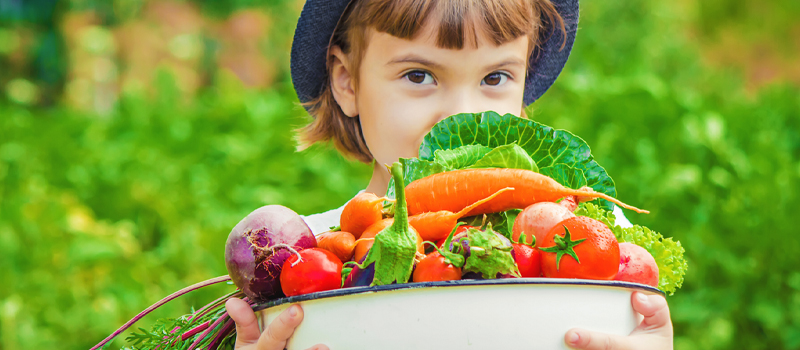
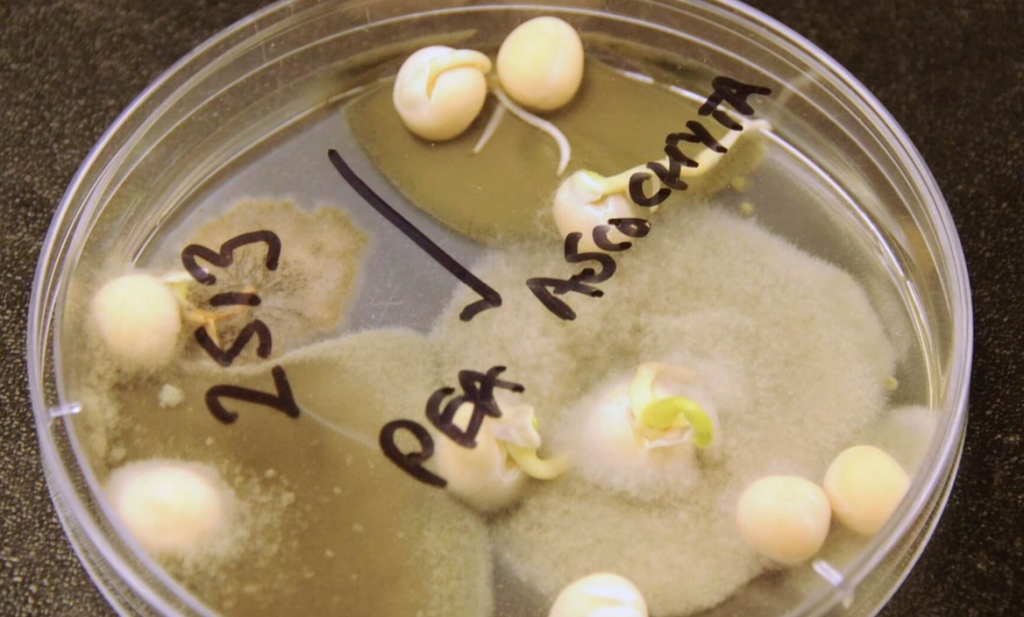 Improper Storage
Improper Storage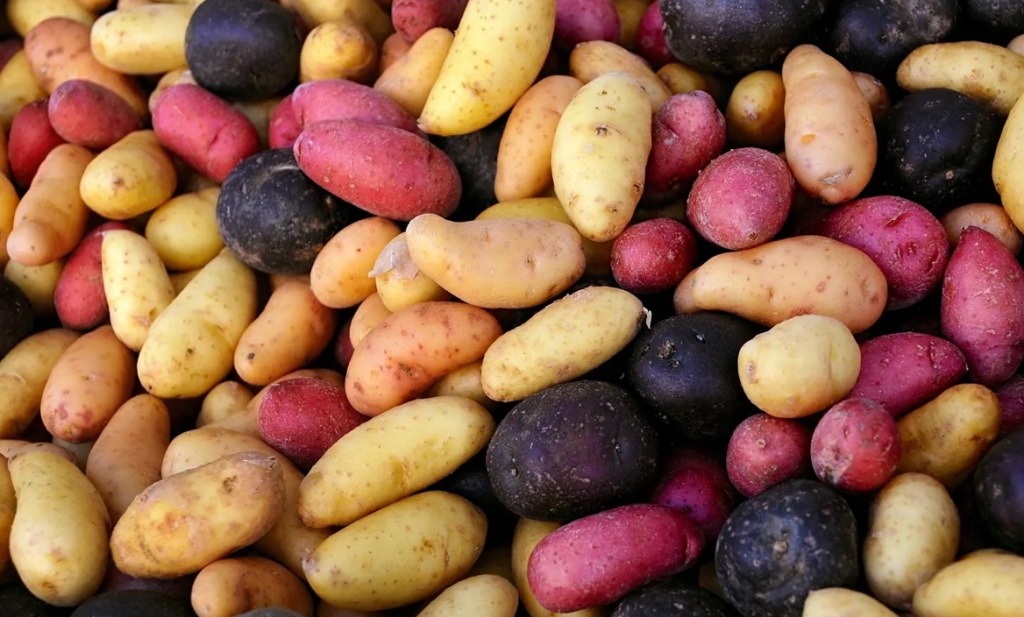 Potatoes
Potatoes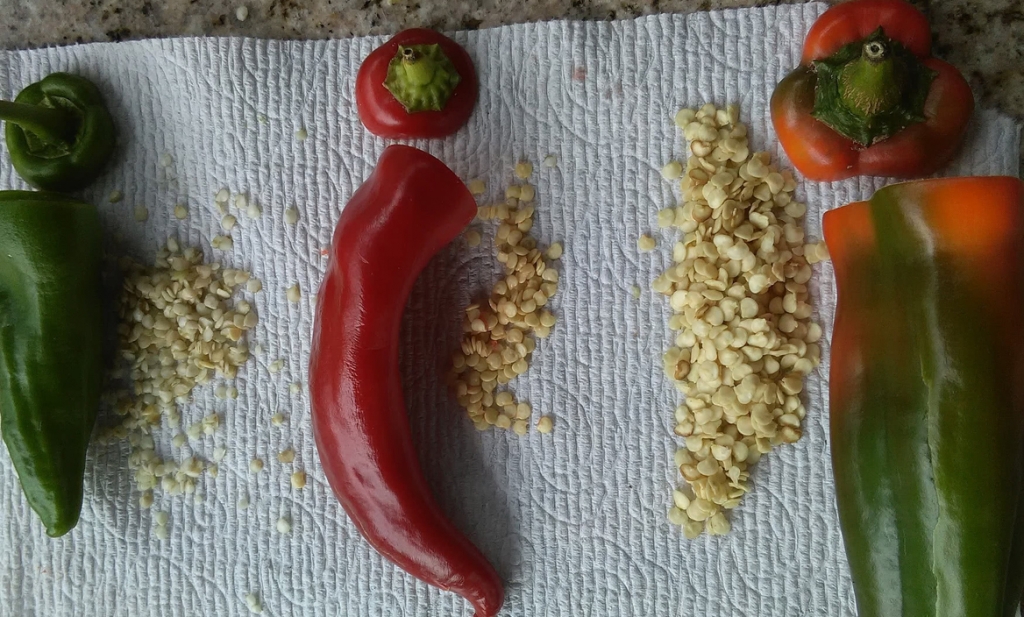 Peppers of all sorts
Peppers of all sorts



